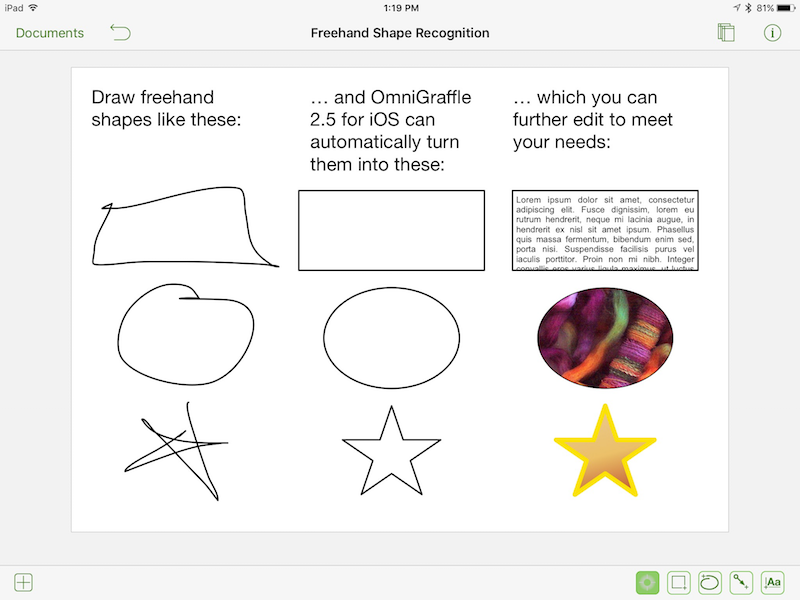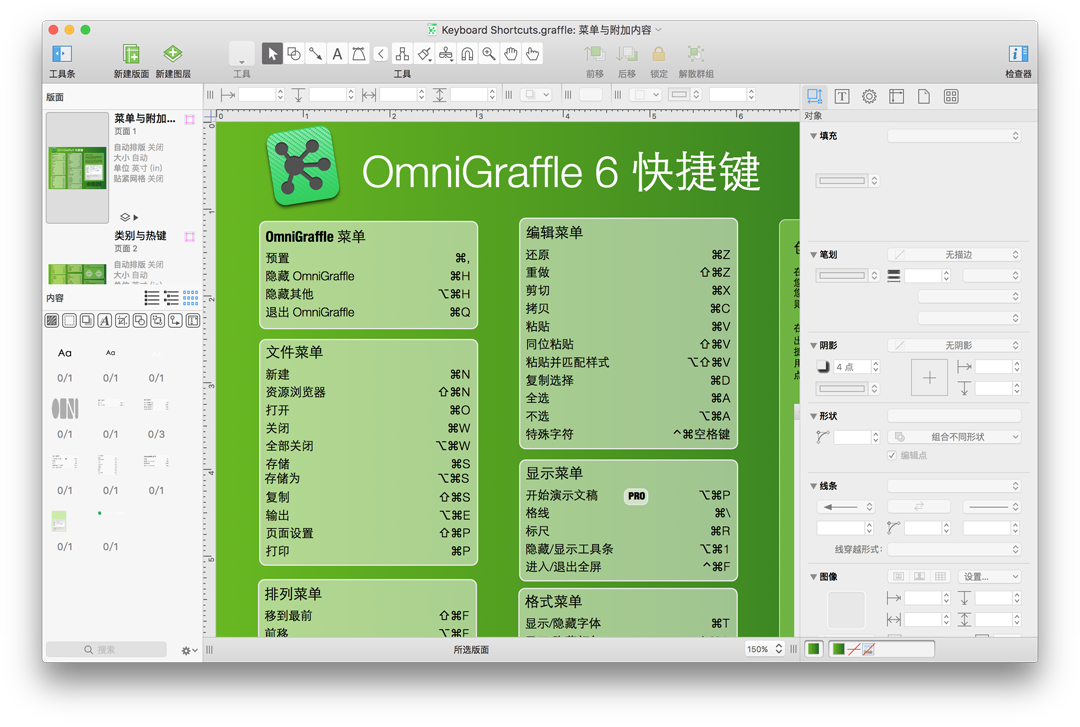

Use the Grid inspector to specify the distance between major (thicker) or minor (thinner) grid lines, their color, and whether shapes on the canvas will snap to the grid when moved into position.

If you choose centimeters (cm) or inches fractional (in) as the unit type, you can also set the Scale and choose the Display Units to be shown with the alignment guides or in text labels. Use the Units inspector to define the units of measurement and how objects scale on the canvas. See Explore Fills and Colors to learn more about the fill types and color palettes in OmniGraffle. You can apply any of the standard fills to the canvas, including changing the color, adding a linear or radial gradient, and more. Use the Canvas Fill inspector to apply a fill color or pattern to the canvas. When set to 100%, your entire canvas can scroll out of view. Scroll Margin: Tap or to adjust how much of the canvas area is added as a scrolling margin around the canvas. When turned on, choose how your document will print:Ĭanvas Padding is disabled when you turn on Size Uses Printer Pages. When turned on, the canvas size is displayed in pages not the Base Units of measurement (i.e., pixels, points, centimeters, or inches). Size Uses Printer Pages: Switch On or Off. The 100% Zoom options make it possible for you to work on large-scale documents at a smaller scale onscreen. For example, at 100% zoom, objects viewed at One pixel only appear smaller onscreen however, they retain their actual size (which you can verify by looking at the object’s dimensions in the Geometry inspector). One pixel matches the pixel density of your display.

At 100% zoom, you can hold a ruler up to your display and the size of the object you are measuring onscreen will match the dimensions you see in the Geometry inspector. One PostScript point displays the contents of your document at real-world size. At 100% zoom, objects viewed at One Apple point only appear smaller onscreen however, they retain their actual size (which you can verify by looking at the object’s dimensions in the Geometry inspector). For example, on a standard-resolution display, 1 point equals 1 pixel on a Retina display, 1 point equals 2 pixels. One Apple point (the default) relates to resolution-independent distance on the display. Print on One Page: Switch On or Off to force your document to print on a single page.ġ00% Zoom: If you have OmniGraffle Pro, you can also specify how things look onscreen when viewing your document at 100% Zoom: Infinite: A canvas that extends infinitely in all directions.Īdditional options found in the Canvas Size inspector include: With Size Uses Printer Pages turned off, you can also add Canvas Padding around the edge of your canvas. Use the switches in the canvas expansion grid to turn on or off the direction in which the canvas will expand. Use the Canvas Size inspector to choose a Canvas Mode (Fixed, Flexible, or Infinite), and define the printing options for this canvas.įixed: A canvas with its width and height set to a specific size for example, 1024 × 768 pixels.įlexible: A canvas which expands in a specified direction (up, down, left, or right) to suit your needs.Ī Flexible canvas allows you to set a minimum Width and/or Height. When you create a new document in OmniGraffle, one of the first things you might consider doing is taking a pass through the Canvas Inspectors here’s a brief overview:


 0 kommentar(er)
0 kommentar(er)
